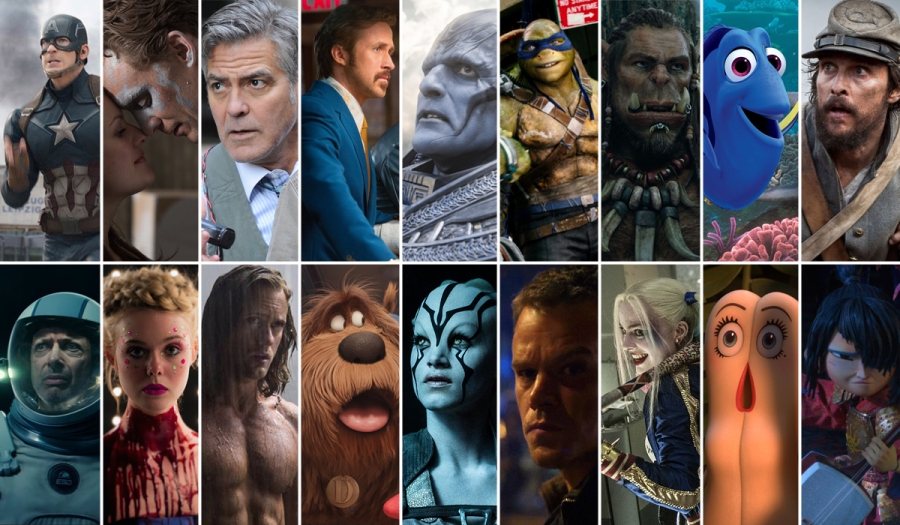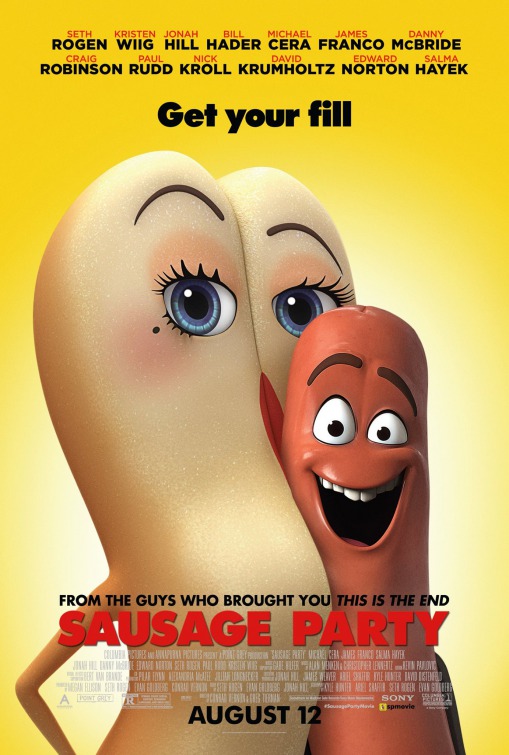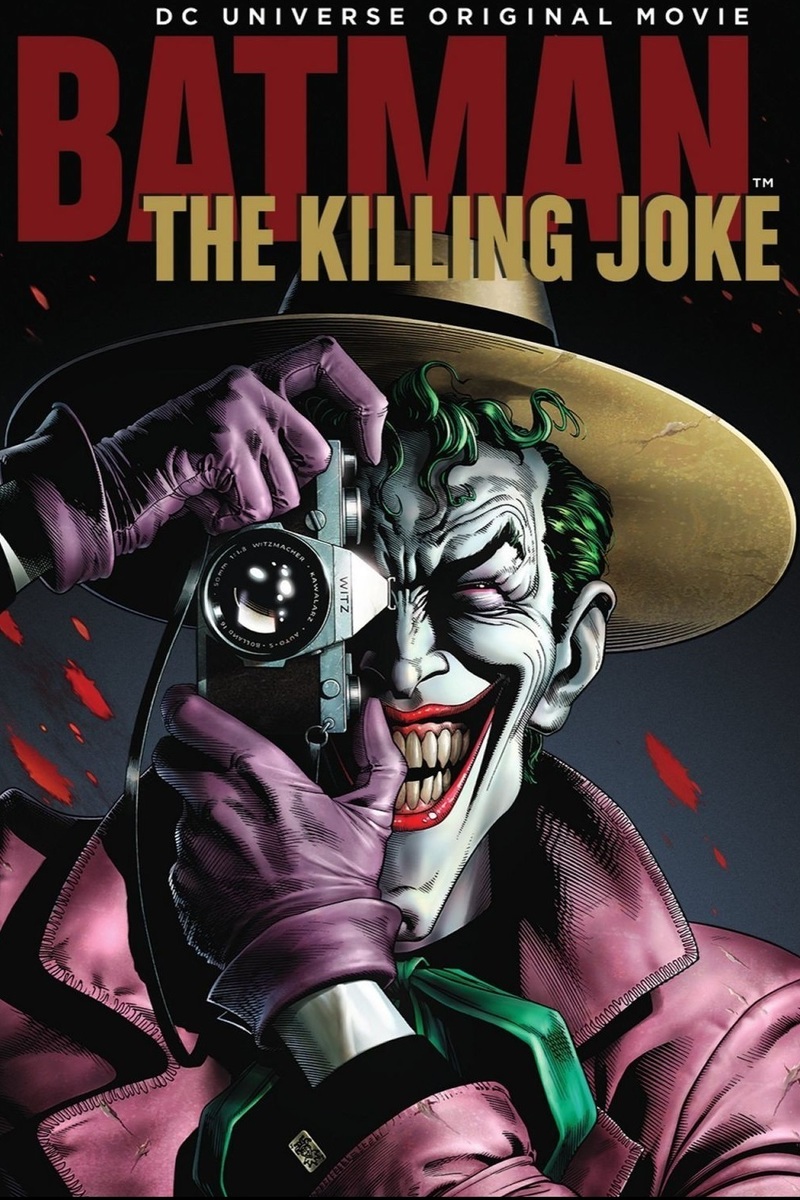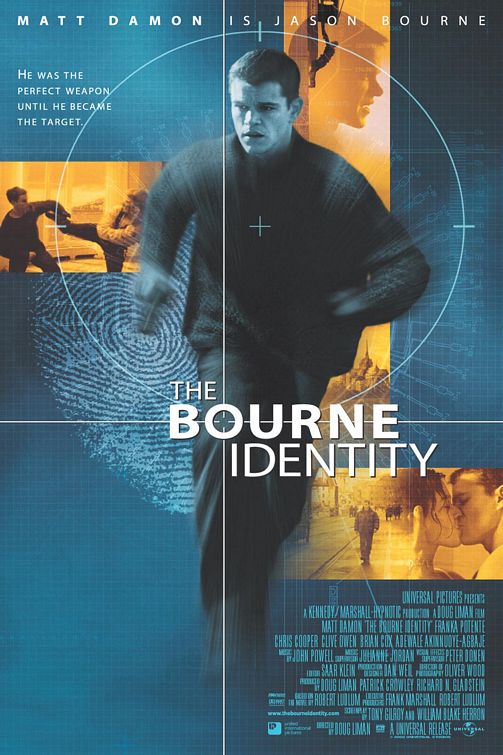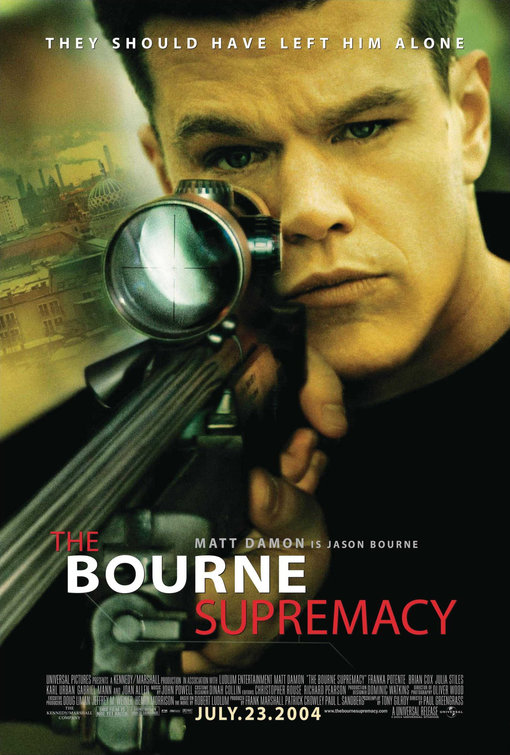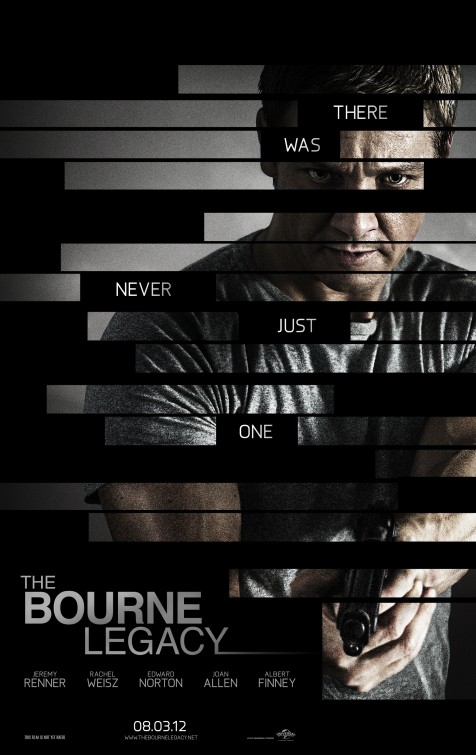
Welcome back to Rhode Island Movie Corner’s ongoing series
of Disney Retrospectives in which I go over the many films that Walt Disney
Animation has produced since 1937. For those who are new to this site, this
series started all the way back in November 2013 when I reviewed the Disney
Animated films of the 90’s, a time period known as the ‘Disney Renaissance’, in
preparation for that month’s release of Frozen.
But it wasn’t until last March when I finally started to do more of these. Once
again doing so in preparation for the newest Disney Animation release at the
time, Zootopia, that month I reviewed
every Disney animated film released since 2000, from Fantasia 2000 (which technically is a 1999 film but didn’t see a
wide release until 2000) to Big Hero 6.
After that post was published, my plan for future Disney Retrospectives was to
go back to the beginning (the 30’s/40’s) and finish them in chronological
order, having initially started by covering everything since 1990 because those
were the films released during my lifetime. But then that plan hit a bit of a
snag back in April when Disney’s live-action remake of The Jungle Book was released in theaters. The week of its release,
there were 3 videos posted online by Screen Junkies’ Honest Trailers series, Cinemasins, and HISHE on the original
animated Jungle Book. And to put it
simply, these videos resulted in a collective critical mauling of the film,
effectively decimating the legacy of what was very much an animated classic.
And yeah, that burned me up quite a bit, so much so that I decided to
fast-track the 60’s/70’s Disney Retrospective that I was working on so that I
could give the film a much more positive review. But of course that meant that
I went out of order again, against my original plan. So as a result, this next
Disney Retrospective will be covering the Disney animated films of the 1980’s.

To put it simply, this wasn’t really that great of a decade
for the studio, not necessarily in regards to the films released during that
time but more in terms of the problems that they had to deal with during these
years. Many refer to the 1980’s as the time in history when Walt Disney
Animation effectively hit ‘rock bottom’. In 1979, a group of animators,
including up-and-coming animator Don Bluth, left the company due to creative
differences that emerged during production of The Fox and the Hound. Specifically, Bluth and the other animators
were becoming frustrated by the studio’s increasingly growing sense of
corporatism that was starting to have a severe effect on their film output. Bluth
ended up forming his own animation company, Don Bluth Productions, that same
year. Initially an independent company, Bluth and his team then got the
opportunity to partner up with Steven Spielberg and his production company,
Amblin Entertainment, in 1984. Bluth Productions would soon go on to become
Disney’s biggest rival during the decade, with some of Bluth’s films even out-performing
Disney’s films at the box-office (e.g. The
Land Before Time against Oliver and
Company). To make matters worse for Disney, this decade also saw the
release of one of their most infamous critical and commercial flops in 1985.
But on a positive note for Disney, the decade wasn’t all bad as it ended with 1989’s
The Little Mermaid. That film would
serve as the beginning for what we now know today as ‘The Disney Renaissance’.
But for now, let’s look back upon this rather tumultuous period of time for
Disney and the 5 films that came out during all of this.
THE FOX AND THE HOUND (1981)
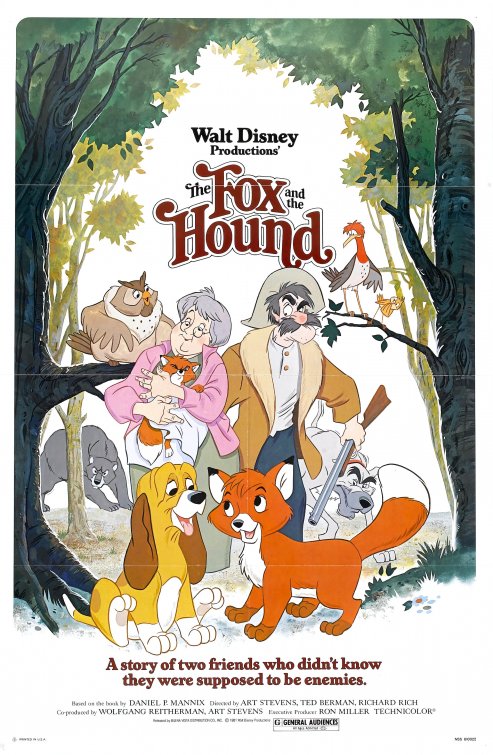
The Fox and the Hound tells
the story of a friendship between the most unlikely of characters, a young fox
named Tod who was sadly orphaned at a young age but gets adopted by a kind
widow farmer and Copper, the young pup of the hunter who happens to be the
widow’s neighbor. But while the two end up becoming friends, that friendship is
soon put to the test when the hunter begins to groom Copper into being a
hunting dog. The first half of the film, in which the young duo become friends,
is legitimately very cute and both of them prove to be very sympathetic
characters. But once the two of them grow up (Tod and Copper are notably voiced
by Mickey Rooney and Kurt Russell, respectively, as adults), the way their
relationship starts to be affected is actually pretty interesting, particularly
when Tod ends up inadvertently causing the hunter’s other dog, Chief, to get
injured which then leads Copper to angrily seek revenge. Admittedly the film
does kind of lose a bit of steam by the end but it’s still really interesting
to watch the development of this relationship over the course of the film,
starting off with them being, to quote the film’s classic song, ‘The Best of
Friends’ to becoming enemies as nature intends them to be. Plus, the film does
have some very effective emotional moments, including the scene where Tod’s
owner, Widow Tweed, is forced to let him go. As noted earlier, this film had a
bit of a troubled production as a result of the departure of animators like Don
Bluth due to conflicts between Disney’s original ‘Nine Old Men’, with this film
being the last that they were primarily involved with, and a new generation of
animators that included the likes of John Lasseter, Brad Bird, and Tim Burton.
Still, as traditional as it may be sometimes, The Fox and the Hound is a very enjoyable entry in the Disney canon
that very much has a good heart.
Rating: 4/5
THE BLACK CAULDRON (1985)
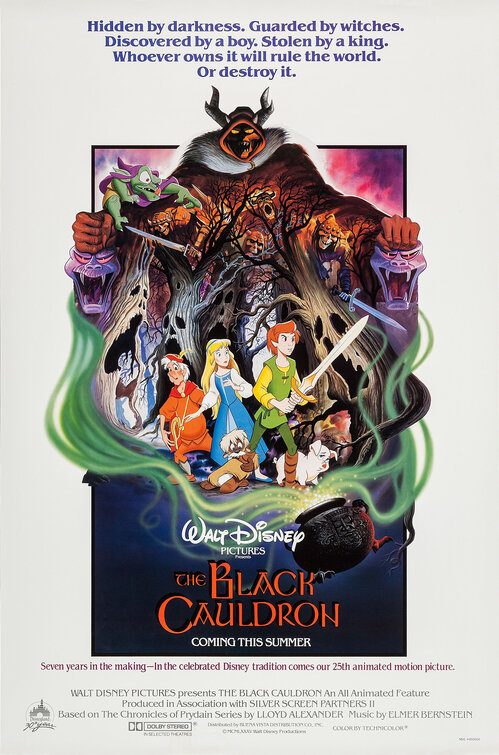
A loose adaptation of the first two books of author Lloyd
Alexander’s The Chronicles of Prydain series, 1964's The Book of Three and the 1965 sequel whose name the film shares, The Black Cauldron was Disney’s first
animated feature to be given a PG rating, effectively making it one of the
studio’s ‘darkest’ animated features to date… and it ended up being a total
disaster for them. Upon release, the film received generally mediocre reviews
from critics. Even worse, the film was a major box-office bomb. At the time it
had the biggest budget of any Disney animated feature to date at $25 million (though
other reports claim that it was even higher at $44 million) and it failed to even
make that back at the box-office. As a result, this film is generally considered
to be the absolute lowest point in the studio’s history. But is it really as
bad as its infamous reputation suggests? Well, yes and no. At the very least,
the film does deserve some credit for at least attempting to do a darker and
more mature animated feature. Granted, it still has plenty of the typical
elements that you’d expect from a more family-friendly Disney film but for the
most part this is easily one of Disney’s darkest films. Part of this comes from
the animation. While I can’t say that it’s one of the studio’s absolute best-looking
films, it certainly stands out with its stylish art direction, which sometimes
produces some very creepy imagery. In fact, the imagery was so disturbing at
times that following a disastrous test screening where younger audiences were
absolutely terrified by it, newly appointed CEO Jeffrey Katzenberg ordered cuts
to the film to tone down some of the more graphic sequences.
However, the visuals are really the only noteworthy thing in
this film, as the story feels underdeveloped and most of the characters are
rather bland. Taran and Princess Eilonwy are fairly standard protagonists, the
same can be said for their sidekicks like Fflewddur Fflam and Gurgi (the latter
of whom sounds like the precursor for Andy Serkis’ Gollum), and even the main
villain, the Horned King, is pretty weak. Sure he can be a rather imposing
figure and the legendary John Hurt does an excellent job in the role but for a
character that I find many people frequently regard as one of the scariest
Disney villains of all-time, he actually doesn’t do that much in the film.
Heck, the whole climax in which he uses the mystical ‘Black Cauldron’ to raise
his undead army of ‘Cauldron-born’ soldiers is really anti-climactic as both he
and his army are dealt with fairly quickly. It seems as if along with the
aforementioned graphic scenes that were cut, there were other story elements
that were cut out as well that could’ve helped developed the plot and
characters more, like a kingdom of fairy-like creatures known as the ‘Faire
Folk’ that the protagonists encounter and yet are only in the film for a few
minutes. In short, The Black Cauldron is,
at the very least, not the absolute worst when it comes to Disney’s animated
features. It does deserve some recognition for attempting to do a story geared
towards older audiences and it certainly has some eye-catching animation. I can
even understand how this film has managed to attract a bit of a cult following
over the years. However, it still is one of the studio’s weaker efforts namely
due to an underdeveloped story that feels really truncated in places and bland
characters on both sides of its conflict. As controversial as this will sound
to those opposed to this current trend, this is one Disney feature that most
certainly demands a live-action remake.
Rating: 2/5
THE GREAT MOUSE DETECTIVE (1986)
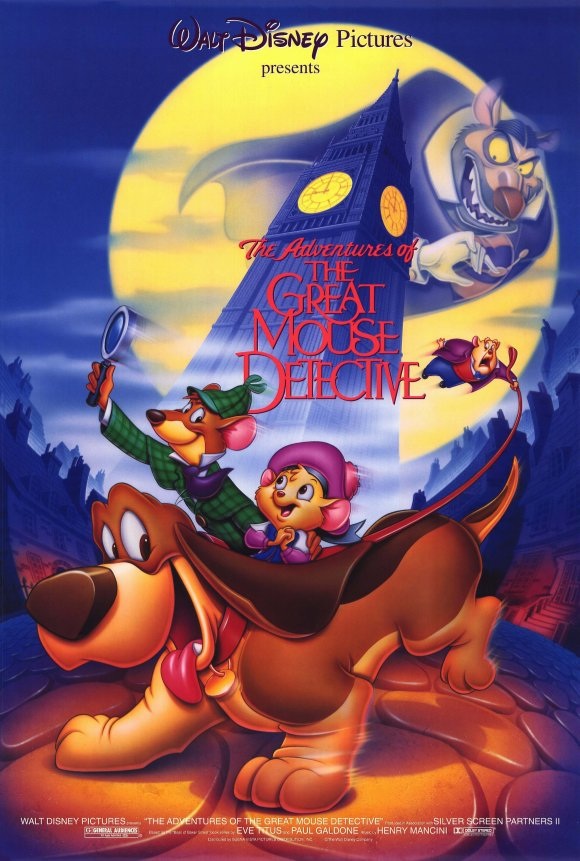
So yeah… The Black
Cauldron certainly didn’t turn out so well for Disney Animation, effectively
putting the future of the studio in jeopardy as a result of its mediocre box-office
performance. Thankfully they turned their luck around immediately with their
follow-up, The Great Mouse Detective,
released the following year. Simply put, the film fared much better critically
and commercially, so much so that even though it’s not technically part of the
‘Renaissance’ era, many consider it to be a ‘Renaissance’ film. And while I’m
personally unsure if I can fully agree with that notion, I do agree that it is
a very entertaining entry in the Disney canon. It’s a fun spin on the concept
of Sherlock Holmes, with the main character Basil being a mouse detective
living under the residence of Holmes himself. The main characters are all very
likable but the biggest standout of them all is the film’s main villain,
Professor Ratigan. Voiced by the legendary Vincent Price, who clearly had a lot
of fun doing the role, Ratigan serves as an excellent foil to Basil in the same
way that Professor Moriarty is very much Sherlock Holmes’ equal. Pair this with
the usual solid Disney animation, which includes a really exciting climax set
within the clock tower of Big Ben, and you have an excellent Disney animated
feature. Like I said before, I don’t know if I could go as far as to call it a ‘Renaissance’
film but it’s still a very important entry in the Disney canon. After the
disaster that was Black Cauldron, The Great Mouse Detective proved to
executives that the animation studio could live on, effectively leading to the
studio’s era of redemption that was ironically kick-started by two of this film’s
directors.
Rating: 4/5
OLIVER AND COMPANY (1988)
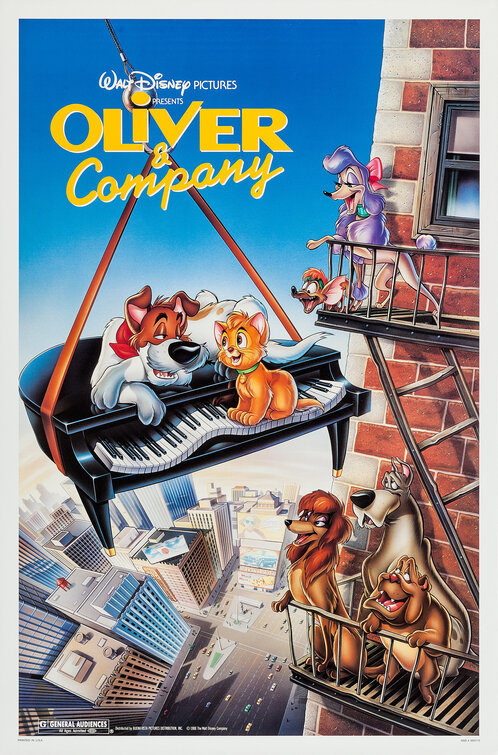
As noted earlier in the intro, this decade saw Disney deal
with its first big ‘rival’ in the form of Don Bluth Productions following Bluth’s
departure from Disney in 1979. And easily the most notable instance of this
rivalry came with their respective 1988 outings, Disney’s Oliver and Company and Bluth’s The
Land Before Time. The main reason why this particular ‘contest’ was so
notable was due to the fact that both films came out on the exact same weekend
of November 18th, 1988. Although Disney’s film did end up beating
Bluth’s at the domestic box-office, ultimately it was the Steven Spielberg and
George Lucas produced Bluth film about dinosaurs that ended up at the #1 spot
that weekend, whereas Oliver and Company only
ended up at #4. So what does that say about the final Disney film released
before the start of the ‘Disney Renaissance’? Well, despite having the
unfortunate distinction of being released in between two of the studio’s most
beloved outings at the time, overall it’s still a decent entry in the Disney
canon. It’s a loose adaptation of Charles Dickens’ Oliver Twist but one that envisions the main characters of the
story as animals. Specifically, main character Oliver is a young kitten while
the crafty Dodger is the grown-up leader of a gang of street dogs. Plus,
instead of being set in 19th century London, this film is set in
modern-day New York, which is pretty neatly animated in a cool ‘sketch’-like
style. Admittedly the film doesn’t really do much with its Twist connections so fans of the novel may not be too big on the
film’s method of adapting Dickens’ story. But even with this in mind, the film
is still a very enjoyable affair.
The main cast of characters are all pretty likable and while
not all of the film’s songs are that memorable, Dodger’s solo ‘Why Should I
Worry?’ (Did I forget to mention that Dodger is voiced by Billy Joel?) has
always been one of my favorite Disney songs. The only real weak link of the
film is the character of Georgette, the pampered poodle of the family whose
daughter, Jenny, adopts Oliver. Despite being played by ‘The Divine Miss M’
herself, Bette Midler, Georgette is a rather extraneous character story-wise. Really
her only trait in the film is that she gets super jealous when Oliver is
adopted by Jenny and tries to get rid of him in any way possible. This
character ends up adding little to the story to the point where I’m pretty sure
the film could’ve easily gotten away without her. Plus, her song, ‘Perfect Isn’t
Easy’… is basically the weakest song in the film. But aside from that, Oliver and Company is a perfectly decent
Disney flick. It’s by no means one of their absolute best but I’m sure that
younger audiences will love this film just fine. I remember liking this film
when I was younger. Granted I’m pretty sure that I only saw it like once in
full when I was a kid but thanks to the ‘Disney Sing-Along’ videos (remember
those?) I was introduced to this film through, of course, ‘Why Should I Worry?’.
Like I said before, even if it’s not one of Disney Animation’s best films, it
certainly has one of their best songs.
Rating: 3.5/5
THE LITTLE MERMAID (1989)
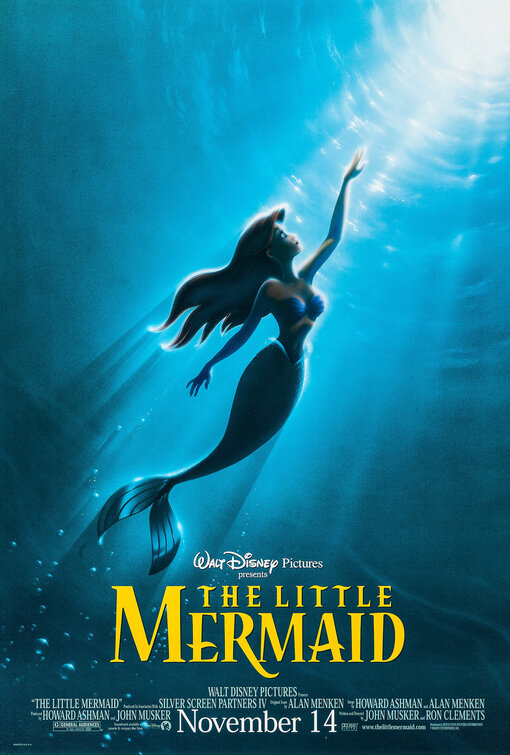
After a considerably long period of under-performing films,
both critically and commercially, Disney finally had a major hit on their hands
at the end of their roughest decade to date when Ron Clements and John Musker,
two of the co-directors on The Great
Mouse Detective who would later go on to direct future Disney films
including Aladdin and The Princess and the Frog, adapted Hans
Christian Andersen’s classic fairy tale, The
Little Mermaid, many years after the studio had attempted to make it back
in Walt’s days. It is commonly regarded as the film that kick-started the
entire Disney Renaissance, though some may even argue that it began with The Great Mouse Detective. But as for The Little Mermaid, it’s admittedly
gotten a bit of flak in recent years, primarily in regards to its main
character. But really, it’s still an excellent entry in the Disney canon. It
has everything you can expect from a great Disney animated film. It has great
animation that still holds up today, especially when considering that this was
the last major Disney film to be primarily done with traditional hand-drawn
animation as Disney would then start utilizing the computer animation system
known as CAPS that they had developed with Pixar. All of the main characters
are unforgettable, from the delightfully villainous Ursula to the kooky seagull
Scuttle, voiced by the legendary Buddy Hackett. And of course the songs by Alan
Menken and Howard Ashman are iconic, from the Oscar-winning ‘Under the Sea’ to
Ariel’s beautiful solo, ‘Part of Your World’.
So what it is about this film that some people don’t like?
Well, as noted earlier, it’s primarily due to the ‘Little Mermaid’ herself,
Ariel. Definitely one of the more controversial Disney princesses (in fact
pretty much every Disney princess prior to the 90’s has been a polarizing
character amongst critics), Ariel has been accused of being ‘too whiny’ and ‘willing
to sell her soul to be with a man she hardly knew’. But like another polarizing
Disney princess, Cinderella, I think Ariel is a stronger character than some
tend to give her credit. After all, her love for Prince Eric wasn’t her initial
reasoning to become a human. It was her adventurous spirit and curiosity about
the human world, which actually makes her stand out quite a bit from some of
her fellow Disney princesses. It just so happens that she came across him one
night and fell in love with him, which just strengthened her resolve. Now with
that said, I do understand where some of her biggest critics are coming from,
specifically the part about her seemingly not showing any remorse for getting
into so much trouble with Ursula. But like Peter Parker in The Amazing Spider-Man, I primarily chalk that up to the fact that
she’s just a ‘teenager’. At the end of the day, I do think she’s a solid female
lead; perhaps a bit immature but still very much likable and Jodi Benson does a
phenomenal job in regards to not only giving Ariel her likable personality but
also giving the character her beautiful singing voice, which ends up being one
of the film’s major plot devices as Ariel is forced to ‘sell’ it to Ursula so
that she can be human. So with all of this in mind, The Little Mermaid is another excellent Disney animated feature
that helped get the studio back on track after such a long time spent arguably having
lost their way.
Rating: 5/5!
And those are the
Disney Animated films of the 1980’s. Thanks for following along and before I go,
I just want to announce that the remaining Disney Retrospectives are now going
to be coming out on a monthly basis. The 30’s/40’s Retrospective will be
published next month and this ‘series’ will conclude with the 50’s
Retrospective in October. After that, well, let’s just say that I have
something BIG planned for November. Until then, what are your thoughts on the
Disney films discussed in this post? Be sure to sound off in the comments
below.
